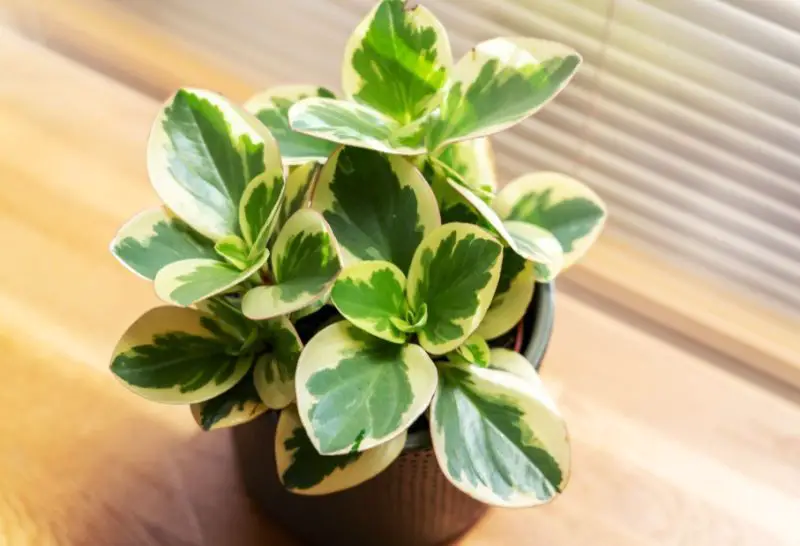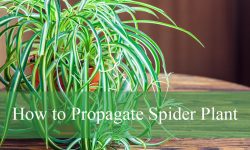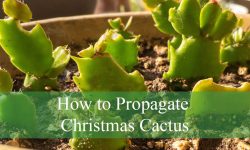Peperomia plants have gained popularity among indoor gardening enthusiasts for their unique foliage, diverse varieties, and low-maintenance care requirements. With their striking appearance and compact size, Peperomia makes an excellent choice for both beginners and experienced plant lovers alike. Whether you’re looking to add a touch of greenery to your home or seeking a resilient houseplant that thrives in various conditions, Peperomia is a fantastic option.
In this comprehensive guide, we’ll explore everything you need to know about caring for and growing Peperomia, from optimal light and watering practices to potting, propagation, and troubleshooting common issues. Dive in to discover how to nurture these charming plants and keep them flourishing in your indoor garden!
About Peperomia Plant

The Peperomia plant, commonly known by names such as baby rubber plant, pepper elder, radiator plant, shining bush plant, and emerald ripper pepper, belongs to the Piperaceae family. Its botanical name is Peperomia spp., and it is a perennial plant. Typically, it grows to a mature size of 6–12 inches in both height and width, making it ideal for indoor spaces or small gardens.
Peperomia plants thrive in environments with full or partial sun exposure. They prefer soil that is moist but well-drained, with a neutral to acidic pH level. These plants bloom in the summer, producing flowers in shades of white, green, and brown. In terms of hardiness, they are best suited to USDA zones 10–12, thriving in warm climates. Peperomia is native to regions in Central America, South America, and the Caribbean.
Peperomia Plant Care
To successfully grow Peperomia plants indoors, follow these key care guidelines. Place the plant in a spot with medium to bright indirect light, making sure to protect it from direct sunlight, which can damage its leaves. Use a loose, well-draining potting mix that retains moisture without becoming soggy. Water the plant when the soil has dried out slightly, and be careful to avoid overwatering, which can lead to root rot. Peperomia thrives in warm temperatures with medium to high humidity levels, so keep it away from frost and cold drafts to ensure healthy growth.
Light Requirements for Peperomia
Peperomia plants thrive best in medium to bright indirect light, which helps maintain their vibrant foliage colors. For optimal light exposure, place your Peperomia near a west- or east-facing window where it can receive ample light without direct sun exposure. If using a south- or north-facing window, position the plant a few feet away from the window to ensure it receives enough light without the risk of scorching its leaves.
Insufficient light can cause the plant to lose its luster, resulting in fewer leaves, leaf drop, and dull coloration. However, direct sunlight should be avoided, as the intense rays can burn the delicate leaves and damage the plant. Maintaining the right balance of light will ensure healthy growth and vibrant foliage for your Peperomia.
Soil Requirements for Peperomia
Peperomia plants thrive in a soil blend that is loose, well-draining, and slightly acidic, mimicking the conditions they would experience in their natural habitat. An orchid potting mix is an excellent choice due to its chunky texture and aeration properties, but regular potting soil can also work well if amended. To improve aeration and drainage, consider mixing in a handful of coconut coir and perlite. These additions help retain moisture while preventing the soil from becoming compacted or waterlogged, which is essential for healthy root growth.
In the wild, many Peperomia species grow as epiphytes, attaching themselves to trees and sending their roots into decaying bark. This highlights the importance of a soil mixture that allows for good air circulation around the roots, mimicking the airy, organic environment these plants naturally favor.
Watering Requirements for Peperomia
When it comes to watering Peperomia, it’s crucial to let the top two inches of soil dry out between waterings. These plants prefer slightly drier conditions, and overwatering can lead to soggy soil, which is a primary cause of root rot. The succulent-like leaves of Peperomia store water, indicating that they don’t need frequent watering to stay healthy.
As a result, it’s better to err on the side of caution and allow the plant to dry out a bit rather than keeping the soil constantly moist. This low-maintenance watering approach helps maintain the plant’s vigor and prevents common issues associated with overwatering.
Temperature and Humidity Requirements for Peperomia
Peperomia plants, being tropical in nature, thrive in warm and humid environments, especially during the summer months when their growth is most active. Ideally, they should be kept in temperatures that mirror tropical conditions, avoiding any exposure to cold or drafts.
If you plan to keep your Peperomia outdoors year-round, ensure you live in USDA hardiness zone 10, as these plants are sensitive to freezing temperatures. In cooler regions, it’s important to bring the plants indoors before nighttime temperatures drop below 50°F (10°C) to prevent cold damage.
For indoor care, Peperomia plants benefit from increased humidity. If they aren’t moved outdoors during the summer, you can boost ambient humidity by placing the pot on a tray of pebbles filled with water or positioning it near a humidifier. Alternatively, placing your Peperomia in a naturally humid area of the house, such as a bright bathroom, can also help them thrive in the moisture-rich environment they love.
Fertilizer Requirements for Peperomia
When fertilizing Peperomia, a light touch is essential. If the soil is poor, you can apply a diluted liquid fertilizer once a month during the growing season (spring and summer). However, Peperomia plants are slow-growing epiphytes, meaning they often extract sufficient nutrients from their planting media, so they can thrive without much supplemental feeding. Over-fertilizing can lead to nutrient buildup and damage the plant, so it’s better to under-fertilize.
During the winter months, avoid fertilizing altogether, as Peperomia enters a period of dormancy and does not require additional nutrients. By keeping the fertilization to a minimum, you help ensure the plant remains healthy and vibrant without overwhelming its delicate system.
Pruning Peperomia
Pruning Peperomia plants is an important maintenance task that can significantly enhance their appearance and health. It’s best to lightly prune these plants in early spring, which is the onset of their active growth period. If you notice leggy or sparse growth, gently pinching back the stems just above a leaf node will encourage the plant to branch out more vigorously, resulting in a fuller and lusher appearance.
To prune, remove the tips of each stem along with the first set of leaves. You can easily pinch these off with your fingers for smaller stems, or use hand pruners for thicker growth to ensure a clean cut. This simple act of pruning not only improves the overall shape and density of your Peperomia but also promotes healthier growth, allowing the plant to thrive in its environment. Regular pruning helps maintain a neat appearance while ensuring that the plant remains robust and attractive.
Common Pests of Peperomia
Peperomia plants can be susceptible to several common pests that typically affect houseplants, including mealybugs, spider mites, and whiteflies. These pests can cause damage by feeding on the plant’s sap, leading to weakened growth and unsightly damage to the foliage. Identifying these pests early is crucial to preventing more extensive infestations.
One of the most effective and straightforward treatments for managing these pests is insecticidal soap. This treatment works by suffocating the insects and disrupting their cell membranes, making it an environmentally friendly option for pest control. To apply, simply spray the affected areas of the plant thoroughly, ensuring that the undersides of leaves are treated as well, since many pests like to hide there. Repeat the application every few days until the pests are eliminated. Regularly inspecting your Peperomia for signs of infestation can help catch these pests early and keep your plant healthy and thriving.
Propagating Peperomia Plants
Peperomia plants are quite versatile and can be propagated at any time, though spring or summer is ideal due to their active growth during these seasons. If you’re planning to prune your plants in the spring, this is a perfect opportunity to take stem cuttings from any extra leggy growth. Here’s a step-by-step guide to propagate your Peperomia successfully:
Start by gathering your materials: sterile pruning snips or scissors, a small pot, a suitable potting soil or orchid mix, plastic wrap, and a brightly lit location. First, cut off a healthy leaf from the mother plant, ensuring that you include at least an inch of stem with it.
Next, place the cutting in a small container filled with potting soil, positioning the cut end down into the soil. It’s important to place this container in a bright spot that receives plenty of indirect light to encourage healthy growth. To maintain humidity and moisture levels, cover the pot with plastic wrap, effectively creating a mini-greenhouse environment.
Be diligent about watering, ensuring the soil remains consistently moist but not soggy; avoid letting it dry out completely. Within a few weeks, you should see roots forming. Once the new plant outgrows its original container, you can repot it into a larger pot to give it more room to thrive. This propagation method is a rewarding way to expand your Peperomia collection while ensuring the health and vitality of your plants.
Potting and Repotting Peperomia Plants
Peperomia plants are remarkably resilient and can thrive for years in relatively small containers. They actually prefer a somewhat root-bound environment, which, along with their slow growth rate, means that you can often leave them in the same pot until you notice roots beginning to emerge from the drainage holes. This characteristic allows them to maintain their health without frequent repotting.
When the time comes to repot your Peperomia, choose a new container that is only a couple of inches larger in diameter than the previous one. This helps prevent excess soil from holding moisture, which could lead to root rot. It’s important to use an acidic potting mix or orchid bark for the new potting medium, as these options provide the ideal drainage and aeration that Peperomia roots thrive on.
Carefully remove the plant from its old container, gently loosening any tightly bound roots without damaging them. Place the plant in the new pot, ensuring it sits at the same depth as it did in the previous container, and fill in around the roots with the new potting mix. After repotting, give your Peperomia a good drink of water and place it in a bright spot with indirect light.
Common Problems With Peperomia
Peperomia is known for being a low-maintenance plant that thrives with minimal care, making it a great choice for both beginners and seasoned plant enthusiasts. As long as you place it in a bright location with indirect sunlight and regularly check the soil moisture, this slow-growing plant typically does not present many issues. However, there are some common problems to watch for that may indicate your Peperomia needs additional attention.
One of the most noticeable signs is leaves curling or yellowing. This usually indicates that the plant is receiving too much water. If you notice these symptoms, it’s best to remove the yellowed leaves to prevent any further stress on the plant. Another issue to look out for is deformed leaves, which can be a sign of a condition known as ring spot. If you observe distorted leaves, it’s advisable to remove them and monitor the plant’s recovery. Unfortunately, if the plant does not show signs of improvement, it may be best to dispose of it, as the disease can be spread by other seemingly healthy plants.
Additionally, leaves falling off can result from various factors, including insufficient light, underwatering, or overwatering. To address this issue, ensure that your Peperomia receives ample indirect light and allow the soil to dry slightly between waterings. When you do water, make sure to water thoroughly. Also, check that your pot has adequate drainage to prevent waterlogging, which can lead to root rot. Using a moisture meter can be a helpful tool in determining when to water, ensuring that your Peperomia remains healthy and vibrant.






